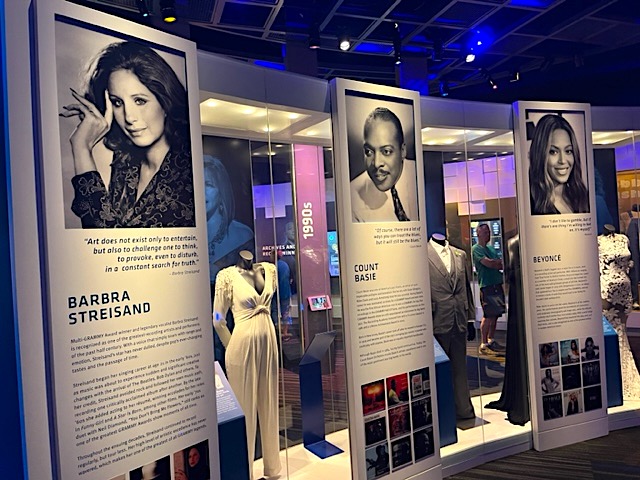






Our stop on this day was at Terrene, Mississippi, although there is nothing in Terrene. We took a 35-minute bus ride into the town of Cleveland for our day’s activities. The countryside was filled with corn and soy bean fields as well as some rice fields.
Cleveland, Mississippi, not to be mistaken with Cleveland, Ohio, is located in Bolivar County, Mississippi, and has a population of around 11,000 residents. Once a passenger railroad stop, it no longer has a railroad line after passenger trains stopped in 1965 and freight trains ceased in 1995. The city, originally called Fontaine, was named after President Grover Cleveland in 1887. In the 1950’s the small town was able to attract Baxter Laboratories and Mississippi Power and Light’s Delta Steam Electric Station just north of town and the population quickly doubled over the next decade.
Cleveland is home to the Grammy Museum Mississippi as Mississippi has more Grammy winners per capita than any other state, making it the perfect location for the Grammy Museum Mississippi. The 28,000-square-foot museum opened in 2016 and offers more than two dozen exhibits, interactive experiences, and films to inspire future generations to create and explore new forms of music using the roots that have existed in this country for centuries. Here we learned about Mississippi’s contribution to America’s music, including the blues, jazz, hip-hop and rock n’ roll. The museum is located in a modern building and the Grammy’s are beautifully presented in this exquisite museum. They have a small theater where we watched Grammy performances from years gone by. They had a traveling exhibit on Route 61, which runs from Minnesota to New Orleans, and brought many musical talents from this route. They have many outfits from the musical celebrities who attended the Grammy’s. Musical instruments were also beautifully displayed along with many opportunities to hear Grammy Award winning artists’ music.
Los Angeles has a larger Grammy Museum, although it does not provide as much local information on the influence of this area.
We enjoyed some of the many window-shopping opportunities in downtown Cleveland where we found an array of restaurants, boutique shops, a pharmacy, and more. This small town is much simpler than most of the towns that we had visited along the Mississippi River. The style of the architecture was simpler as was the selection of merchandise.
We visited the Martin & Sue King Railroad Museum, highlighting the 19th and 20th centuries, when the railroad was essential to the settlement and growth of the Mississippi Delta. The coveted railroad attracted many great industries to the town of Cleveland, Mississippi, including Baxter Laboratories, Delta Steam Electric Station, and more. The trains were vital in the transportation of people, goods, and mail. We walked through to explore the museum and its thousands of artifacts, photographs, documents and see a 1941 Illinois Central caboose. The museum focuses mostly on the extensive model railroad they have on display with tons of buildings, cars, landscapes and more.
Our next stop was the Mississippi Delta Chinese Heritage Museum. The fertile land of the Mississippi Delta has made the region fundamental to America’s agricultural economy. In the wake of the Emancipation Proclamation and the Civil War, immigrants from a diverse array of ancestries and cultures began to inhabit the area. In the 1880s Chinese immigrants began to work in the vast fields and farmlands of the Delta, originally as a source of inexpensive labor. Since then, the Chinese families that settled there have been an integral part of the community. At the Mississippi Delta Chinese Heritage Museum, the rich history of this significant community is displayed and preserved. We discovered the powerful stories of the Chinese families and culture that are tightly woven into the Mississippi Delta. Many Chinese immigrants opened grocery stores in the area and were only partially accepted into the community. White schools were not open to the Chinese, forcing them to attend small minority schools or be home schooled.
The evening’s entertainment was a review show called “Just Go to The Movies” put on by the crew and the house band. It featured a wide variety of musical numbers made famous by the movies that they were included in. The crew did a great job with their costumes and choreography.
